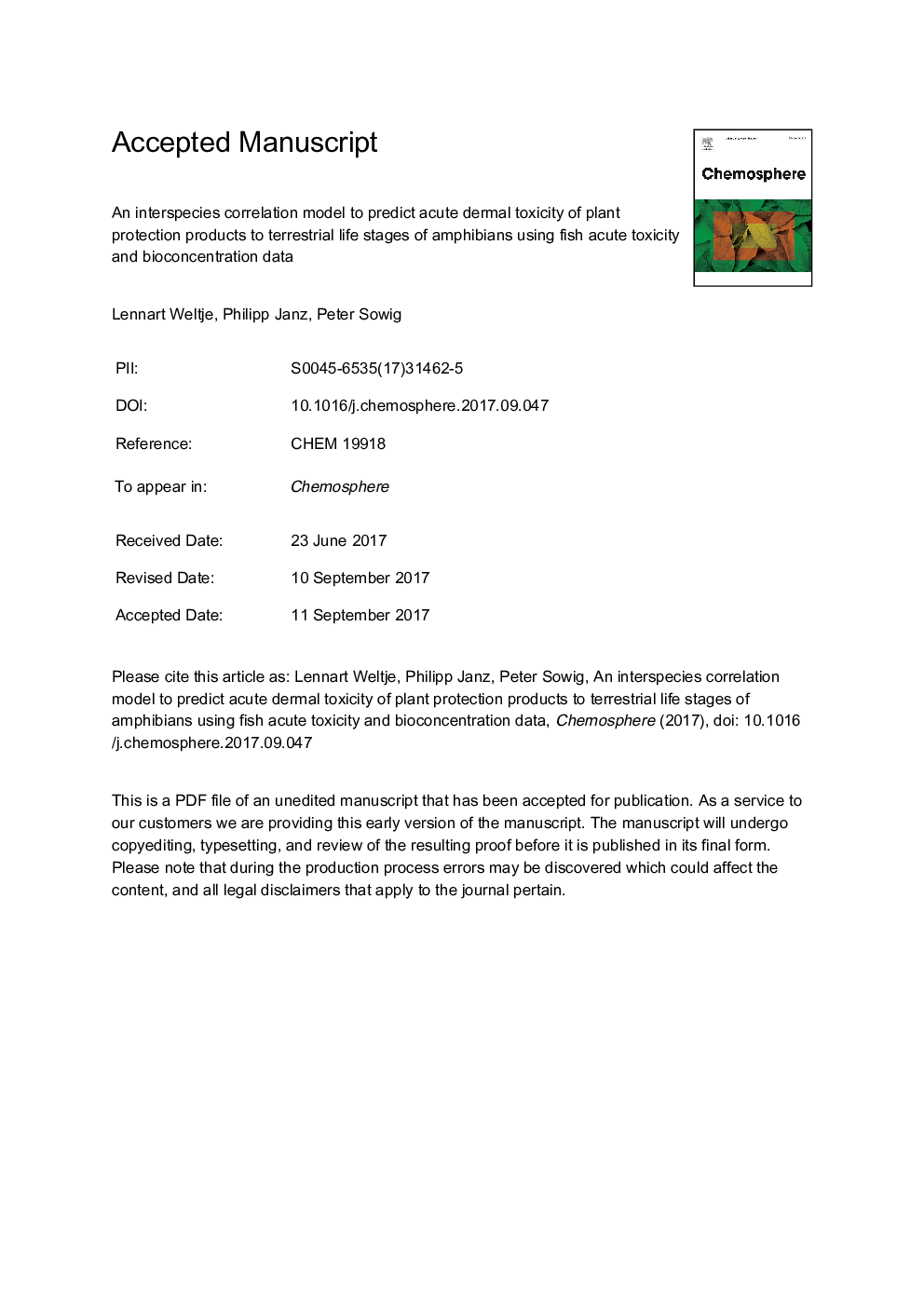| Article ID | Journal | Published Year | Pages | File Type |
|---|---|---|---|---|
| 5745897 | Chemosphere | 2017 | 31 Pages |
Abstract
This paper presents a model to predict acute dermal toxicity of plant protection products (PPPs) to terrestrial amphibian life stages from (regulatory) fish data. By combining existing concepts, including interspecies correlation estimation (ICE), allometric relations, lethal body burden (LBB) and bioconcentration modelling, an equation was derived that predicts the amphibian median lethal dermal dose (LD50) from standard acute toxicity values (96-h LC50) for fish and bioconcentration factors (BCF) in fish. Where possible, fish BCF values were corrected to 5% lipid, and to parent compound. Then, BCF values were adjusted to an exposure duration of 96Â h, in case steady state took longer to be achieved. The derived correlation equation is based on 32 LD50 values from acute dermal toxicity experiments with 15 different species of anuran amphibians, comprising 15 different PPPs. The developed ICE model can be used in a screening approach to estimate the acute risk to amphibian terrestrial life stages from dermal exposures to PPPs with organic active substances. This has the potential to reduce unnecessary testing of vertebrates.
Keywords
Related Topics
Life Sciences
Environmental Science
Environmental Chemistry
Authors
Lennart Weltje, Philipp Janz, Peter Sowig,
